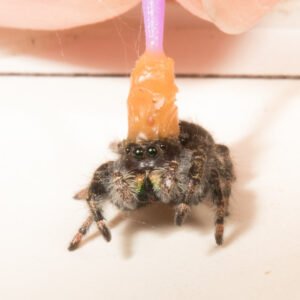Jumping spiders are fascinating creatures that have captivated the curiosity of scientists and nature enthusiasts for centuries. With their incredible agility and unique hunting strategies, these small arachnids have become a topic of interest for those who marvel at the wonders of the natural world. From their diverse colors and intricate patterns to their surprising ability to leap great distances, jumping spiders continue to amaze us. This article invites you to delve into the world of these remarkable creatures and discover just how big they can get. Get ready to be amazed!”
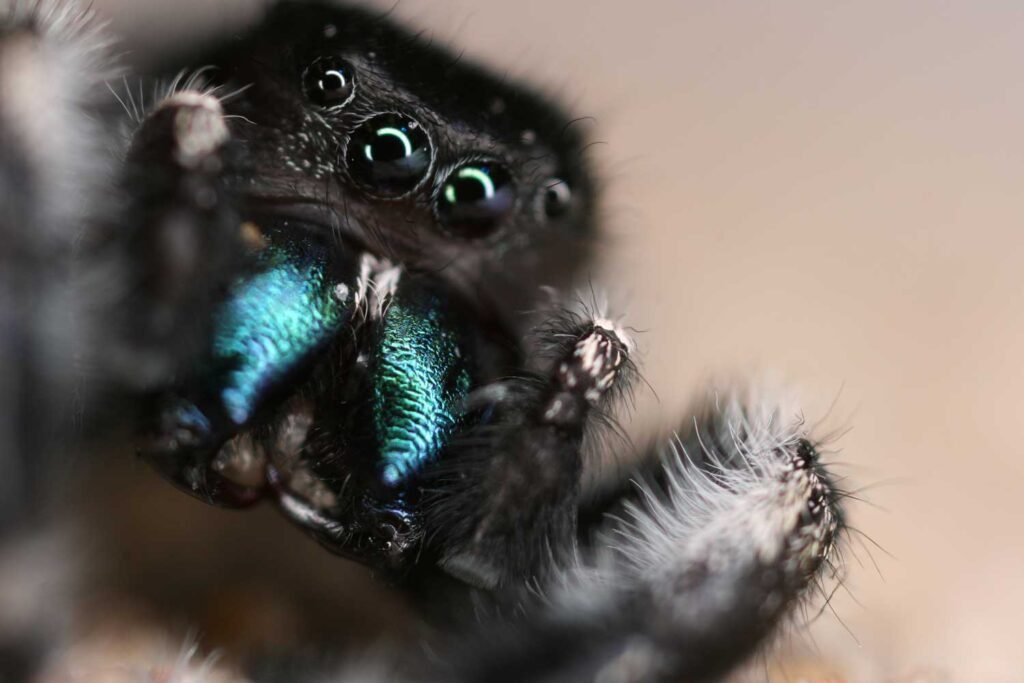
This image is property of www.sciencefriday.com.
Overview of Jumping Spiders
Jumping spiders are a fascinating group of arachnids that belong to the family Salticidae. With over 6,000 described species, they make up the largest family of spiders in the world. Known for their incredible agility and unique hunting techniques, jumping spiders have captured the curiosity of scientists and nature enthusiasts alike. In this article, we will explore the physical characteristics, habitat and distribution, behavior and diet, life cycle, adaptive features, social behaviors, fascinating species, predatory nature, venom composition, interaction with humans, and the importance of research and conservation efforts when it comes to these remarkable creatures.
Physical Characteristics
Jumping spiders are generally small in size compared to other spider species, with most individuals measuring only a few millimeters in length. However, they vary significantly in coloration and patterns, making them visually striking. Their bodies are compact and robust, and they have eight legs, as most spiders do. One of the features that set jumping spiders apart is their well-developed front pair of eyes, giving them excellent vision. These eyes, called anterior median eyes or AMEs, provide the spider with acute depth perception.
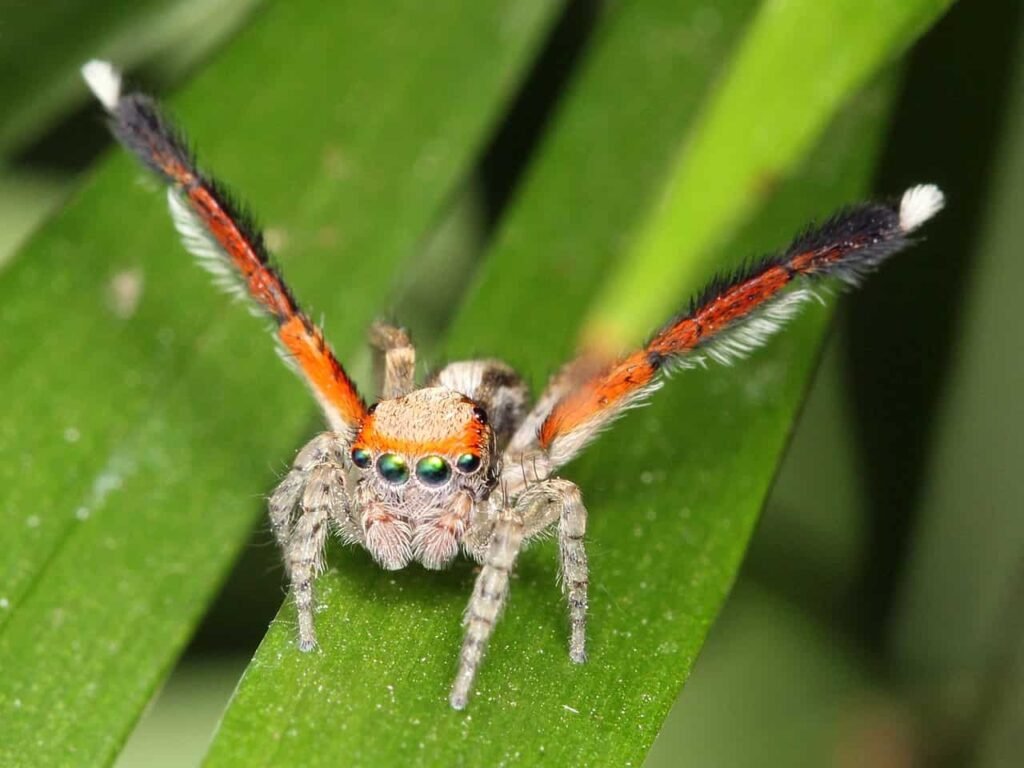
This image is property of cdn.zmescience.com.
Habitat and Distribution
Jumping spiders can be found in various habitats around the world, including forests, grasslands, deserts, and even urban areas. They are extremely adaptable and have managed to colonize nearly every continent on Earth, with the exception of Antarctica. These versatile spiders can thrive in both hot and cold climates and are known to display remarkable resilience. While some species are arboreal and can be found on trees and plants, others prefer to live on the ground, rocks, or even inside human dwellings.
Behavior and Diet
Jumping spiders are diurnal hunters, which means they are active during the daytime. Unlike many other spider species that rely on webs to ensnare their prey, jumping spiders use their exceptional vision, agility, and cunning hunting techniques to catch their meals. They stalk their prey and then, with lightning-fast movements, pounce on them, often jumping impressive distances. Their diet mainly consists of insects such as flies, mosquitoes, beetles, and even other spiders. These versatile predators are known to be quite selective in their prey choices, opting for specific insects that provide adequate nutrition.
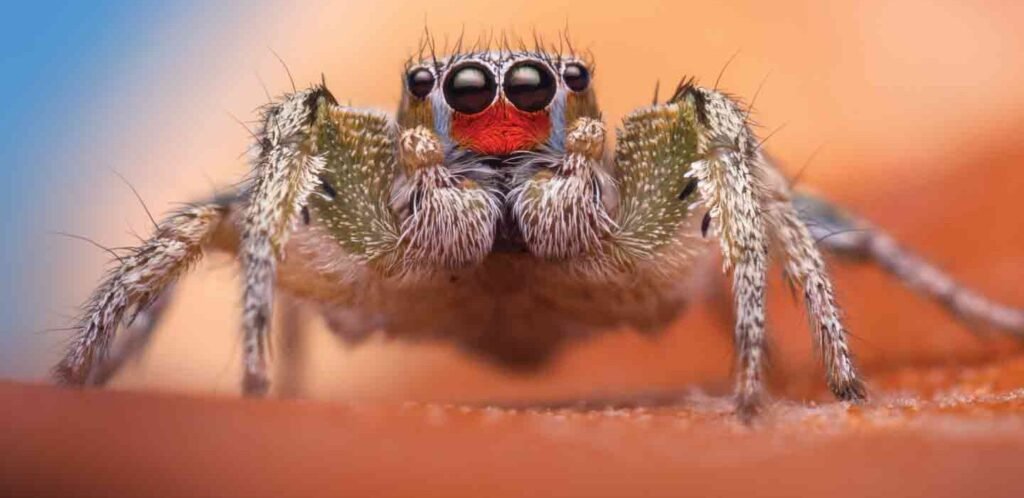
This image is property of www.snexplores.org.
Life Cycle of Jumping Spiders
Egg Stage
The life cycle of jumping spiders starts with the egg stage. After successful mating, the female jumping spider produces an egg sac, which she then carefully guards. The silk-covered sac provides protection to the developing eggs inside and is usually attached to a suitable substrate. The number of eggs within a sac varies among species but can range from a few to several dozen. The female will stay close to the sac, ensuring its safety until the spiderlings eventually emerge.
Spiderlings Stage
Once the eggs hatch, the tiny spiderlings begin their journey into the world. At this stage, they are known as spiderlings and closely resemble miniature versions of adult jumping spiders. Spiderlings are remarkably independent from birth, and unlike many other spider species, they do not rely on their mothers for food or protection. They disperse and start hunting for prey on their own. Despite their size, spiderlings possess all the characteristics and abilities necessary for survival, including the ability to produce silk.
Adult Stage
As spiderlings grow and molt, they progress to the adult stage. The duration of this transformation varies among species, as some reach adulthood within a few weeks, while others may take several months. Adult jumping spiders are sexually mature and ready to reproduce. They continue their hunting activities and exhibit the characteristic traits of their species, such as their specific coloration and courtship behaviors. The adult stage is the period in which jumping spiders engage in mating, communication, and establishing territories.
Adaptive Features of Jumping Spiders
Vision and Hunting Techniques
Jumping spiders possess extraordinary vision, which contributes to their exceptional hunting skills. Their AMEs provide them with high-resolution, color vision that allows them to spot prey from a considerable distance. In addition to their AMEs, jumping spiders have six other eyes known as secondary eyes, which provide them with a wide field of view. The combination of their sharp vision and agile bodies enables them to precisely calculate distances and execute impressive leaps to capture their prey.
Silk and Web-building Abilities
While jumping spiders are not known for constructing intricate webs like other spider species, they do possess silk glands and can produce silk. Silk plays a crucial role in the spider’s life, aiding in various aspects such as creating egg sacs, constructing shelter, or forming draglines that help them navigate their surroundings. Jumping spiders produce silk of exceptional strength and versatility, allowing them to adapt to diverse habitats and situations.
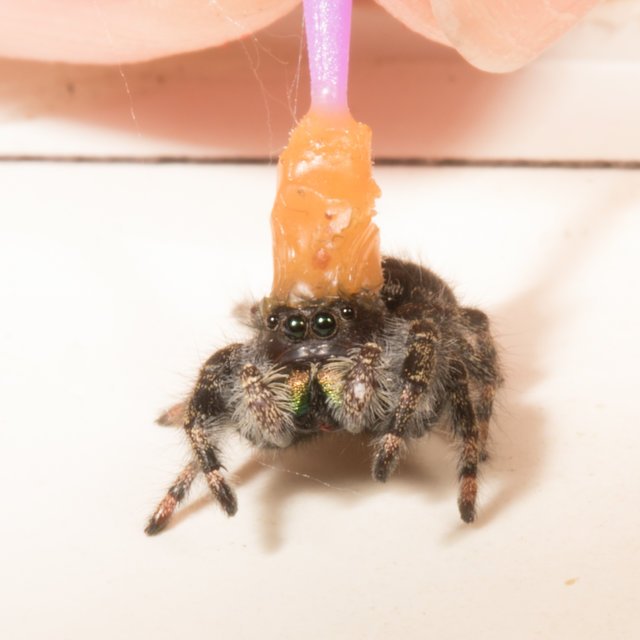
This image is property of static01.nyt.com.
Social Behaviors of Jumping Spiders
Communication
Jumping spiders display fascinating social behaviors, including intricate communication techniques. Male jumping spiders, in particular, engage in elaborate courtship displays to attract females. These displays often involve intricate dances, visual signals, and sometimes even vibrations or drumming on surfaces. By using a combination of body movements, postures, and colors, the male spider communicates his intentions and attempts to win the favor of the female.
Mating Behaviors
Mating in jumping spiders is a delicate and complex process. After successfully attracting a female, the male must approach her cautiously, as there is always a risk of being mistaken for prey. To mitigate this, the male performs careful movements and signals to communicate his intentions and establish trust. If successful, mating occurs, and the male may leave a sperm packet for the female to fertilize her eggs. However, not all matings end in success, and in some cases, the male may become a meal for the female.
Fascinating Species of Jumping Spiders
Peacock Spider
One of the most visually stunning species of jumping spiders is the Peacock Spider, known for its vibrant and intricate coloration. Found primarily in Australia, these spiders have the ability to extend flaps on their abdomen, resembling a peacock’s fan, during courtship displays. Males perform elaborate dances, showcasing their brilliant colors to attract females. These tiny arachnids have captured the attention of researchers and nature enthusiasts worldwide due to their dazzling and unique courtship behaviors.
Zebra Spider
The Zebra Spider, also known as Salticus scenicus, is a common jumping spider species found throughout Europe and North America. As the name suggests, these spiders have black and white stripes on their bodies, resembling a zebra. Despite their small size, they are formidable hunters, displaying impressive agility and quick reflexes. Zebra spiders are frequently observed jumping and maneuvering with incredible precision as they hunt for their preferred prey, which includes small insects like flies and aphids.
Regal Jumping Spider
The Regal Jumping Spider, scientifically known as Phidippus regius, is a species native to North America. Adorned with a striking emerald green body and contrasting red chelicerae, this spider is often regarded as one of the most visually appealing jumping spiders. Its distinctive coloration and sizable size make it a popular choice among spider enthusiasts. Despite its regal appearance, this species, like other jumping spiders, is an active and skilled predator.
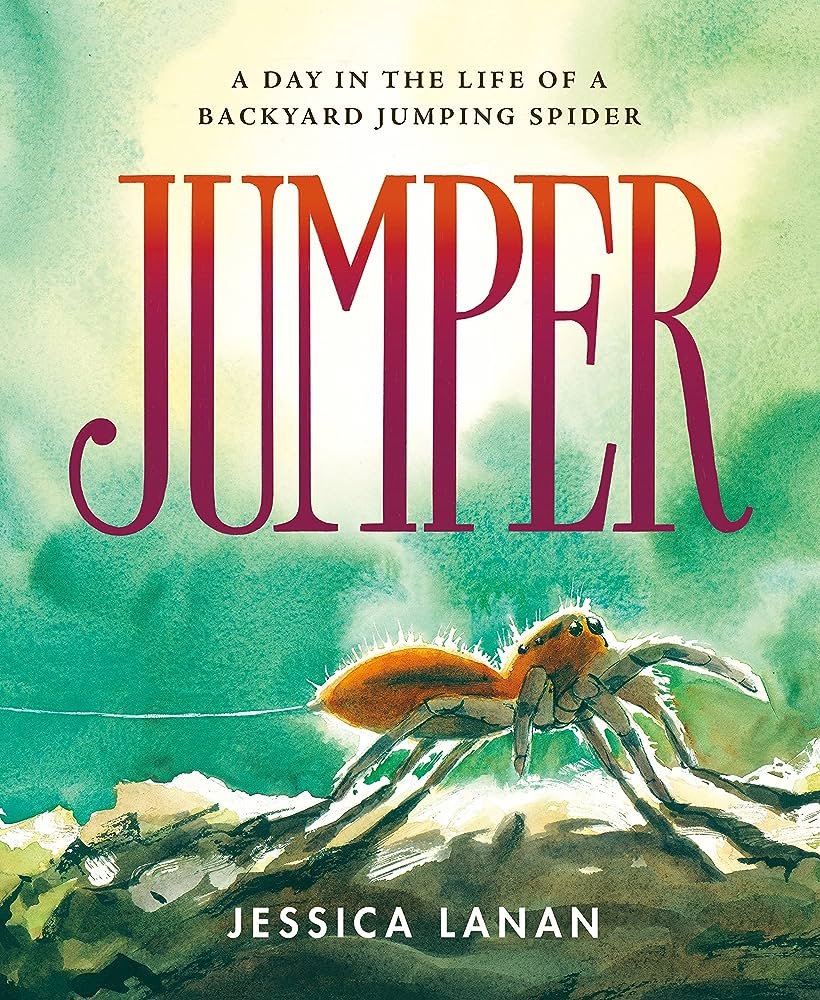
This image is property of Amazon.com.
Jumping Spiders as Predators
Prey Selection
Jumping spiders are highly selective in their prey choices, opting for specific insects that provide optimal nutrition. They typically target small insects such as flies, mosquitoes, beetles, and caterpillars. The ability to select suitable prey is essential for their survival, as not all insects provide the required nutrients to sustain the spider’s energy levels and health. The hunting prowess and agility of jumping spiders allow them to tackle a wide range of prey items and adapt to different hunting situations.
Predation Techniques
Unlike spiders that rely on webs to capture and immobilize their prey, jumping spiders employ active hunting strategies. They stalk their potential prey from a close distance, using their acute vision to observe their target’s movements. Once they determine the optimal moment, they launch themselves with extraordinary precision, using their powerful leg muscles to pounce on their unsuspecting victim. Jumping spiders use a combination of silk draglines and their impressive jumping abilities to navigate their environment and secure their meals.
Jumping Spider Venom
Composition
Jumping spiders possess venom glands and inject venom into their prey to immobilize and eventually digest them. While the composition of jumping spider venom varies among species, it typically contains a mixture of enzymes, peptides, and other bioactive compounds that aid in subduing the spider’s prey. The venom acts quickly, allowing the spider to incapacitate its victim efficiently.
Effects on Prey and Humans
Jumping spider venom primarily affects the nervous system of their prey, causing paralysis and eventually death. However, it is important to note that most jumping spider species have venom that is not harmful to humans. Their venom is designed to prey on small insects and does not pose a significant threat to human health. Nevertheless, as with any interaction with wildlife, it is advisable to exercise caution and avoid provoking or handling jumping spiders to minimize the risk of potential bites.
Interaction with Humans
Jumping Spiders as Pets
Due to their visually appealing appearance and fascinating behaviors, some people choose to keep jumping spiders as pets. Setting up a suitable habitat, providing appropriate prey, and ensuring the spider’s well-being are crucial aspects when considering keeping a jumping spider as a pet. It is essential to research the specific requirements of the species you intend to keep and understand that they have specific needs that must be met in order to thrive in captivity.
Jumping Spiders in Folklore and Symbolism
Jumping spiders have found their way into the folklore and symbolism of various cultures throughout history. In some traditions, seeing a jumping spider is believed to bring good luck or signify positive change. Their agility, vision, and hunting skills have inspired admiration and respect in many societies. Furthermore, in certain indigenous cultures, jumping spiders are associated with patience, cunningness, and the ability to seize opportunities.
Research and Conservation
Scientific Studies on Jumping Spiders
Although jumping spiders are a well-known group of spiders, there is still much to uncover about their fascinating behaviors, physiology, and biology. Scientists conduct extensive research on these creatures to gain a deeper understanding of their unique attributes, including their exceptional vision, hunting techniques, and courtship behaviors. These studies contribute to our overall knowledge of arachnids and further our understanding of the natural world.
Conservation Challenges and Efforts
While jumping spiders are not currently considered critically endangered, they face various conservation challenges. Habitat loss, pesticide use, climate change, and human activities pose threats to their populations. Efforts to conserve jumping spiders and their habitats include raising awareness about their importance within ecosystems, implementing sustainable land management practices, and establishing protected areas. Encouraging biodiversity conservation and promoting an understanding of these remarkable creatures are essential for their long-term survival.
Frequently Asked Questions about Jumping Spiders
What do jumping spiders eat?
Jumping spiders have a diverse diet that mainly consists of small insects such as flies, mosquitoes, beetles, and caterpillars. They are highly selective in their prey choices, opting for insects that provide optimal nutrition.
Why do jumping spiders have such good vision?
Jumping spiders have exceptional vision, particularly in their anterior median eyes (AMEs). These eyes provide high-resolution, color vision, allowing the spiders to spot prey and navigate their environment with precision. Their acute vision is a vital adaptation for their hunting techniques and overall survival.
Can jumping spiders harm humans?
Most jumping spider species have venom that is not harmful to humans. Their venom is primarily designed to subdue small insects, and their interactions with humans are generally harmless. However, as with any wildlife, it is advisable to exercise caution and avoid provoking or handling jumping spiders to minimize the risk of potential bites.
